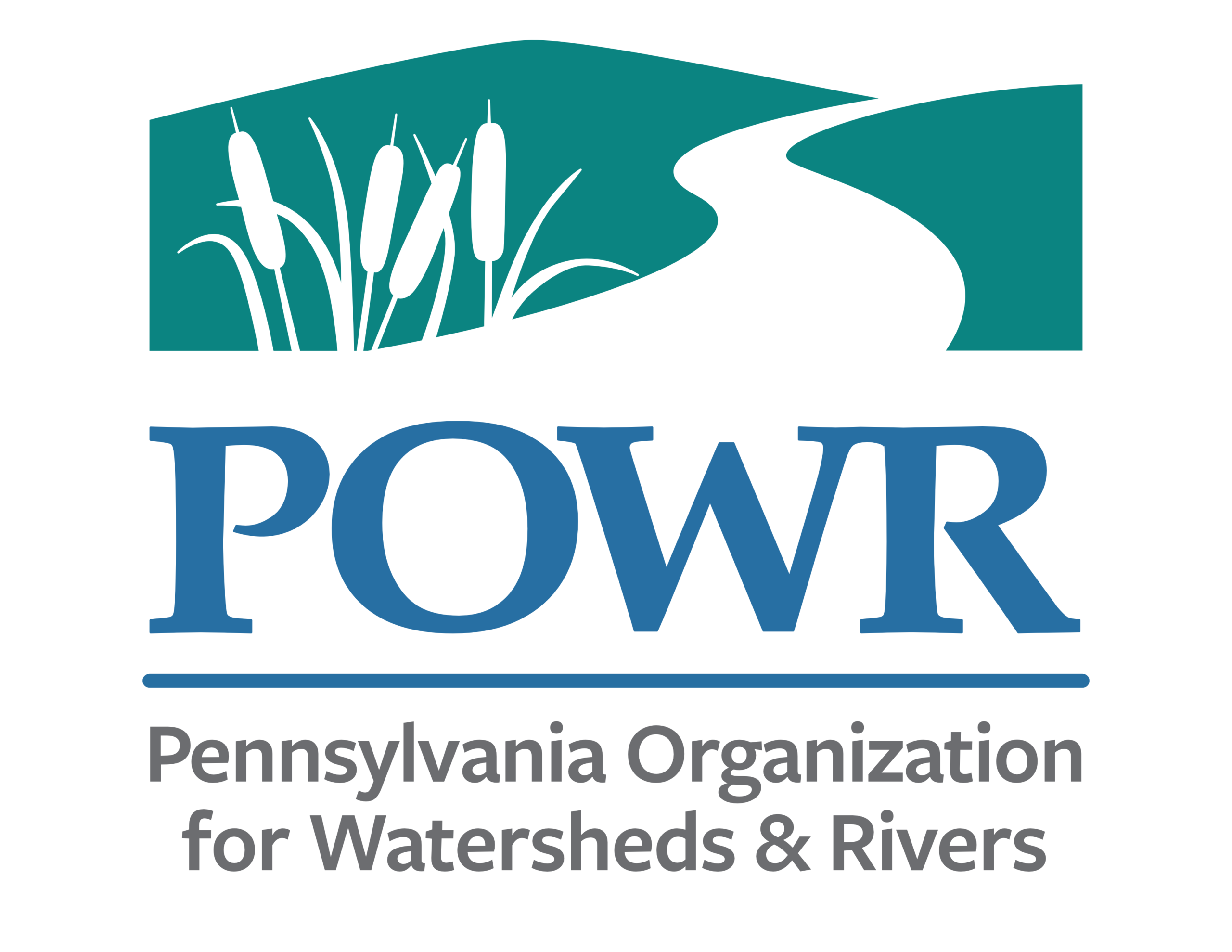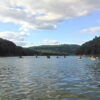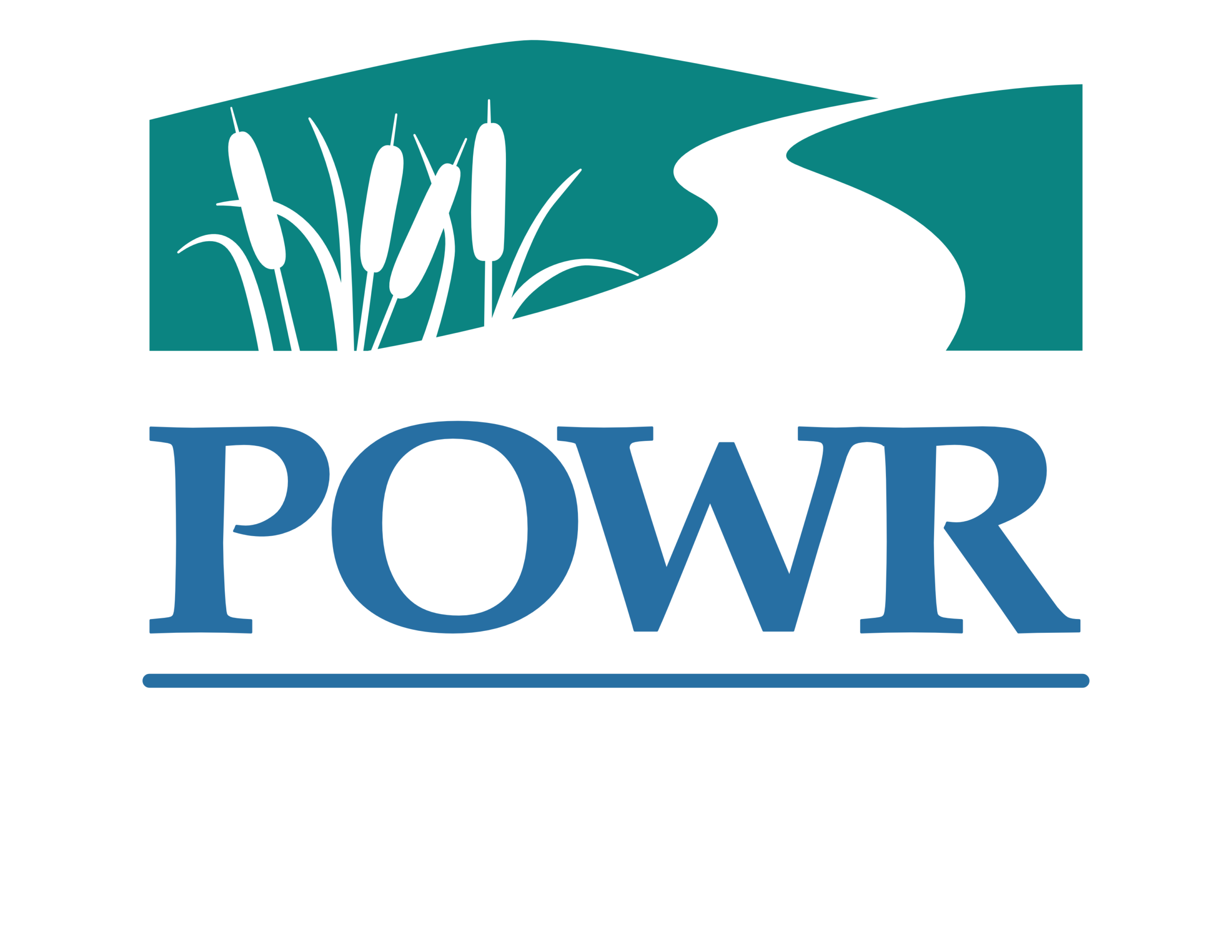Two Virtual Western PA Watershed Workshops Scheduled: Oct 7 and 9
POWR is hosting TWO virtual workshops in October. While we wish we could gather in person for these “regional workshops,” the networking opportunities and presentations will still be meaningful and informative. Both will offer the chance to share resource, partnership, and program information and reconnect with colleagues and partners in the Erie and Ohio basins and across the commonwealth.
One workshop will take place in the evening and will include presentations by experts in the field of floodplain management and community planning and resiliency. The other will take place mid-day and will include presentations on the Value of Water in the Laurel Highlands and Planning Successful Sojourns, Clean-ups, and other events.
We recognize the many challenges you are facing and the varied demands for your time. Still, we hope to see you at one or both of these workshops.
REGISTER for the Oct. 7 Workshop 6-8:15 PM
AGENDA for Oct 7
REGISTER for the Oct. 9 Workshop 12-2:15 PM
AGENDA for Oct 9
Thank you for attending the Central PA Regional Workshops for Watershed Organizations
Please take a moment to complete the Workshop Evaluation for the Mid-day option on Aug 11.
AGENDA for the Central Regional Workshops
Presentation links below.
Evening Central PA/Susquehanna Basin: Thursday Aug 6
Chesapeake Bay Stewardship Fund
Links to Business Plans:
Central Appalachia Business Plan
Susquehanna River Basin Commission
First Community Foundation Partnership
Northeast: Friday June 26
Good Water = Good Life Presentation
Next to happen: Southeast Region: Wednesday, July 1, 2020
Advocacy vs. Lobbying Presentation
Want to learn more? Check out River Networks FREE Webinar Series: The What, Who, and How of Nonprofit Advocacy Work Visit Advocacy Webinars to view recordings.
Communicate for Action Presentation
Participant Guide to the Virtual Meeting: Learn how to set up and use the meeting software. It is basically Zoom, though you cannot use your Zoom account to join.
Other Learning From Home Opportunities During COVID-19
Working from home doesn’t mean we stop learning! With multiple free webinars and virtual presentations planned in the next week, watershed professionals and volunteers can stay current and connected with colleagues.
Recording Available for: Volunteer Motivations, Management, Recruitment, and Retention Webinar
Please take a moment to respond to the evaluation link after you watch the recording.
Summary: Dedicated, enthusiastic, motivated volunteers are critical to the success of watershed associations and almost every other nonprofit organization. But understanding volunteer motivations, recruiting volunteers for short- and longer-term engagement, retaining your best volunteers, and meaningfully recognizing and celebrating your most dedicated champions are the likely among the greatest challenges you face as a leader of your organization. Join us for this engaging and informative presentation to better understand the 21st century volunteer and how you can effectively meet the challenge of recruiting and retaining their talents to help you advance your project and organizational goals.
Recording Available for Fundamentals of Drinking Water Webinar
POWR was excited to host a panel of experts from PA American Water, River Network, and Penn State Extension who led this webinar about the fundamentals of drinking water management and protection in PA. Watch and share the recording below to learn how you can help protect you local drinking water.
Here are some additional links to educational videas about drinking water. Thank to Penn State Extension for sharing them.
A seven minute video about protecting water wells: https://extension.psu.edu/protecting-your-water-well
A recorded webinar entitled “Individual Actions to Protect Pennsylvania and Groundwater” https://extension.psu.edu/individual-actions-to-protect-pennsylvania-groundwater
A link to an entire Safe Drinking Water Clinic that was recorded on Facebook Live that would be easy to share across Facebook pages: https://www.facebook.com/watch/live/?v=618424268710059
Recording available for “Your Attention Please: Attracting Media Coverage for Your Activities and Initiatives”
If you think that positive media coverage happens by luck or accident, it is time to think again. Your watershed group’s upcoming program, new initiative, or even your efforts to secure more volunteers and donors CAN garner the publicity you desire by using the right media relations strategy.
If you missed this engaging and educational webinar with tips for maximizing broadcast, print, and social media coverage, watch the RECORDING now.
Tips for engaging with journalists on Twitter
Here are some facts, ideas, and tips that were shared by Eric Eckl, Owner of Water Words that Work, via a recent webinar about how to get the attention of local journalists using Twitter.
Eighty-three percent of journalists use Twitter. A vast majority of those check Twitter daily, 1 in 5 check or post their accounts hourly! It is their source for breaking news; they use it to see what other news organizations are covering; and to find ideas and sources for stories. Twitter often drives reporter’s perception of what’s going on in the community.(Though they still want pitches via email.)
How to find and engage with a local journalist:
- When you read an article on a local on-line paper on a topic of interest to your organization, you can click on the by-line of the reporter. That will usually take you to their ‘bio page’ which will very likely have the ‘Twitter bird” icon. Click on it. Then click the “follow” icon.
- You can increase your engagement by “liking” a tweet (a heart icon)
- If you comment (speech bubble icon) on something they have written or Tweeted, try to be positive and supportive. If you disagree or have additional thoughts, be POLITE, knowledgeable, and constructive. Show that you can be a trusted source for additional information and/or a new perspective.
- Take it to the next level by “re-tweeting” something they have Tweeted (using the two-arrow icon)
Why do this? Because they will notice. The journalist you are following receives a notification when something they Tweeted gets liked, re-Tweeted, etc. And often, their bosses evaluate their work based on these metrics. So you are actually doing them a favor when you engage this way. You laying the foundation for the relationship that they will remember when you email and call them with your pitch.
A note on ‘hashtags’: Do not try to be overly creative with hashtags (#). Use ones that are intuitive to your topic of interest. If you want to promote “clean water in PA” use CleanWaterPA (caps don’t really matter) not “KeepItKleenKeystone.” If a journalist is researching a new storyline and wants to find out who is working on clean water in PA, they are going to search using an intuitive hashtag. Research what others with a similar objectives to your organization’s are using and use those.
As for ‘user tags’ (@), they are linked to specific Twitter accounts and you must be accurate if you want your tweet to link back to that user. If you Tweet, “Great article about our stream clean up project by @talimacarthur” and my username is @taliPOWR it won’t link back to my account, and I won’t know I got a shout out from you.
Finally, when you use Twitter to engage with a journalist, use a professional account linked to your organization. Not your personal account.
A big thank you to Eric for these tips!
Motivating Action for the Environment
Learn to design communication and outreach plans that motivate action and change for the environment. Understand why people don’t do what you really want them to do. Learn new ways to motivate them in your outreach and messaging. Check out resources, including webinars, at: www.brooketully.com
Watch a quick 5 min video about debunking communication tactics to motivate action:
Recording now available for POWR’s General Liability Insurance Program Webinar
On Tuesday March 3 POWR hosted a webinar to provide information about POWR’s General Liability Insurance program, a service we provide to nonprofit watershed organizations working in Pennsylvania. You can watch the recording (click on the link below) to learn more about what is covered, the liability limits, pricing, signing up, and deadlines. We will address frequently asked questions as well as additional questions you have. Our guest presenter, representing Simpson and McCrady, LLC., addressed non-profit risk management generally.
We promised to clarify a few things that came up during the webinar:
The employee benefit liability and auto liability are NOT included in the master general liability program.
The general liability coverage extends across the US, so there is no restriction for an organization whose volunteers engage in activities across state lines.
The water activity exclusion is intended to exclude recreation on the water including boating tours. It is not intended to exclude water quality monitoring and testing activities that was discussed on the webinar, so that should not be a concern for our watershed organizations.
Recording for “Databases for Watershed Group Volunteer and Member Management” now available!
Tracking, maintaining, and managing your member and volunteer lists is one of the most time-consuming parts of running a watershed organization. But the payoffs are huge – organizations grow much faster when they have solid systems for tracking and renewing members and volunteers.
Guest presenter Baird Straughan talked about the range of databases available for river and watershed groups. Baird shared this online tool for evaluating what kind of database fits your organization’s culture, motivations, and needs. Baird has created a unique volunteer and membership management database, WaterGrass, designed with community watershed organizations in mind and provided a brief introduction to that as well.
Recording now available for POWR’s webinar on stream redesignations and a fisheries perspective on water quality designations:
Click here
POWR hosted a webinar focusing on stream redesignation evaluations and water quality designations from a fisheries management perspective. POWR was joined by Mark Brickner, Water Program Specialist at the PA Department of Environmental Protection, and Tom Shervinskie, Chief of the Watershed Analysis Section at the Fish and Boat Commission.
Recording available for POWR’s Conservation Opportunity Area Tool Webinar
Developed in collaboration between the Pennsylvania Game Commission and the Pennsylvania Fish and Boat Commission, the Conservation Opportunity Area Tool is an interactive, web-based tool to support conservation planning and implementation for at-risk species. Users can find information on Species of Greatest Conservation Need, habitats, conservation actions, and more. Learn how to use this tool to explore statewide features or seek information in an area of interest to you and your conservation organization.
For more information about the Conservation Opportunity Tool, click here
For information about the Pennsylvania Wildlife Action Plan, click here
Recording Available for the Webinar on PADEP’s Integrated Water Quality Report and new Mapping Application held on Sept. 12
Click here for the recording to the webinar hosted by POWR with PADEP staff presenting the Draft 2018 Integrated Water Quality Monitoring and Assessment Report which, for the first time, is available as an interactive web-based format. This format conveys tremendous amounts of information in a way that is much easier to find, read, and understand than previous reports. Plus, DEP has created the 2018 Integrated Report Viewer, which provides enhanced search capabilities and export functions. The combination of these two tools can help you access local water quality assessment information and make decisions about ways you can help maintain, protect, and restore those waters.
For more information including links to the report and the mapping tool, visit DEP’s Integrated Report website
Handouts and Links from the Webinar and In-person Presentations on the Draft Phase 3 Chesapeake Bay WIP
Staff of the PA Department of Environmental Protection unveiled the draft Chesapeake Bay Watershed Implementation Plan for Pennsylvania during a webinar and in-person meeting hosted by the Pennsylvania Organization for Watersheds and Rivers (POWR).
Invited speakers from the DEP and other partnering organizations presented an overview of the plan and how it was developed as well as little about the science and data that informs the plan and how it relates to local water quality and planning efforts. Additionally, attendees learned how to engage in the public comment process and how to stay involved during the county planning and implementation efforts moving forward. Attendees had an opportunity to participate in a Q&A session.
Please see the Agenda for additional details including speaker names and organizations
DEP’s Presentation PowerPoint: Draft Phase 3 WIP Intro_DEP
Webinar Handout: Tips for Drafting Comments on Pennsylvania’s Draft _05-24-2019
Clean water starts in our own backyards, and local solutions can lead to big impacts downstream. This interactive story map shows how local actions in the Chesapeake Bay watershed help improve water quality in our own communities, but also provide benefits to the Bay and the communities that rely on it. This story map is still under development, so if you have any questions or feedback, please contact Emily Trentacoste (trentacoste.emily@epa.gov) at the Chesapeake Bay Program.”
Link to Interactive Story Map: https://gis.chesapeakebay.net/wip/localstory

Water Quality In PA – An Integrated Report
The 2018 Integrated Report marks a significant change from previous reports by moving to a new digital and fully interactive format. This offers the ability to convey tremendous amounts of information in a way that is much easier to understand. As a supplement to the Integrated Report, DEP has also created the 2018 Integrated Report Viewer, which provides enhanced search capabilities and export functions. The combination of these two tools should greatly facilitate the public’s access to water quality assessment information and better inform the public on the steps DEP takes every day to protect Pennsylvania’s waters.
Click on the link below for the report:
Presentations available from the Statewide Conference for Watershed Associations
With presenters’ permission, we are pleased to share selected presentations from POWR’s Statewide Conference for Watershed Associations held February 24-25, 2019. The presentations are available as downloadable PDFs here
2018 Regional Watershed Workshops
As a follow-up to our 2016 series, POWR and PEC are convening a series of regional workshops across the state to identify needs and provide organizational capacity and technical resource tools to Pennsylvania’s community watershed organizations. Invited guests include staff from PA DEP, PA DCNR, County Conservation Districts and regional and local environmental organizations with watershed-focused programs and resources.
On this page you’ll find copies of workshop agendas and presentations for each of our regional meetings as they occur. We will continually update to provide latest schedule for upcoming meetings in your region. Click here for more information.


